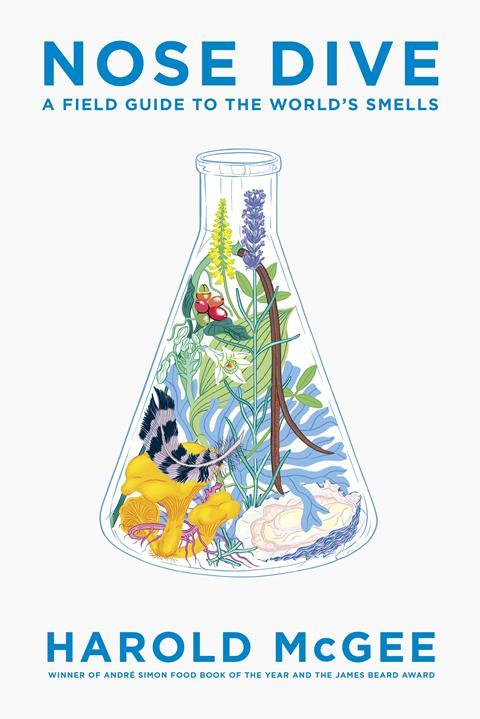Harold McGee
John Murray
2020 | 688pp | £35
ISBN 9780340963227

Buy this book on Amazon.co.uk
Buy this book on Bookshop.org
I love smelling things, so the title of this book appealed to me. The fact that it is a guide also suggested to me that once I read the book, I could always come back to it to search specific smells that intrigued me.
When the book first arrived, I was struck by its beautiful cover depicting vegetation in an Erlenmeyer flask, but also intimidated by its size – almost 700 pages. The book itself smelled nicely of quality thick paper.
The book starts – and ends – with a story of the author’s first and second experience of eating grouse, a game bird, at a London restaurant, which had quite an impression on him, producing intense sensations of smell and taste that completely absorbed him. The author’s preface is followed by an introduction to the sense of smell, how it arises, how the brain perceives it and how it can confuse us. There are five parts at the core of Nose Dive, split into 19 chapters in total. Primordial smells are explained in the first part, followed by animal, plant, land and water related smells in the next three parts, and finally fragrances and food. Each part could certainly have been a book of its own.
I thoroughly enjoyed the description of how we perceive smells and how our 400 odour receptors work with one another to theoretically ‘distinguish among many millions of different molecules and molecule mixtures’. It will always stay with me that we categorise smells based on where we first encounter them – which might explain why I can’t stand coriander. I always associated its scent with soap.
Most of the book’s subchapters contain tables listing different smells and the molecules responsible for producing that sensation. There are also nice sketches of the main molecules responsible for different smells. I now understand why carp has a sort of muddiness to its taste, what is in truffle oil and how plants’ defensive systems give rise to the spices we put in our food.
But Nose Dive is not just a guide to smells, it also presents a lot of evolutionary history relating to smells, and even has a short introduction to chemistry for non-specialists. The book is full of anecdotes about flowers, spices, food and drinks, and has an artistic touch to it – each chapter is prefaced with a literary quote.
This book is a must-read for chemists as well as for anyone passionate about nature, food, drinks and cooking. There is something for everyone in this book.
I read Nose Dive in a few weeks, and when I finished it, I knew that I would come back to it. The author must have put a massive amount of work into it – and I am truly grateful for it.












No comments yet